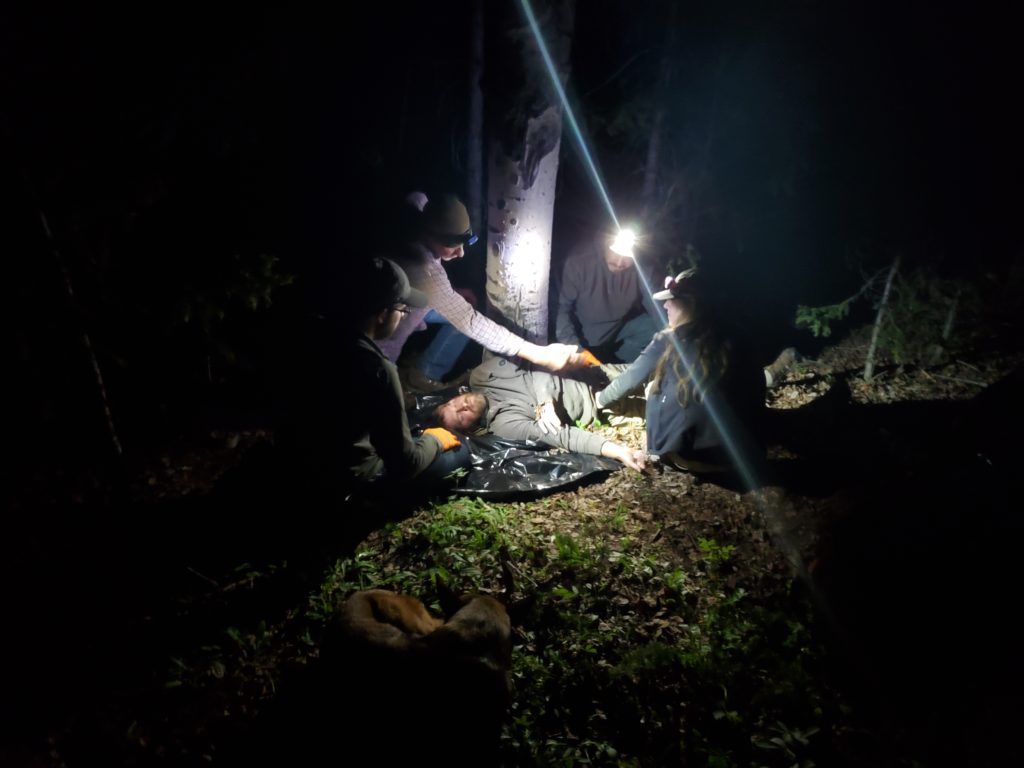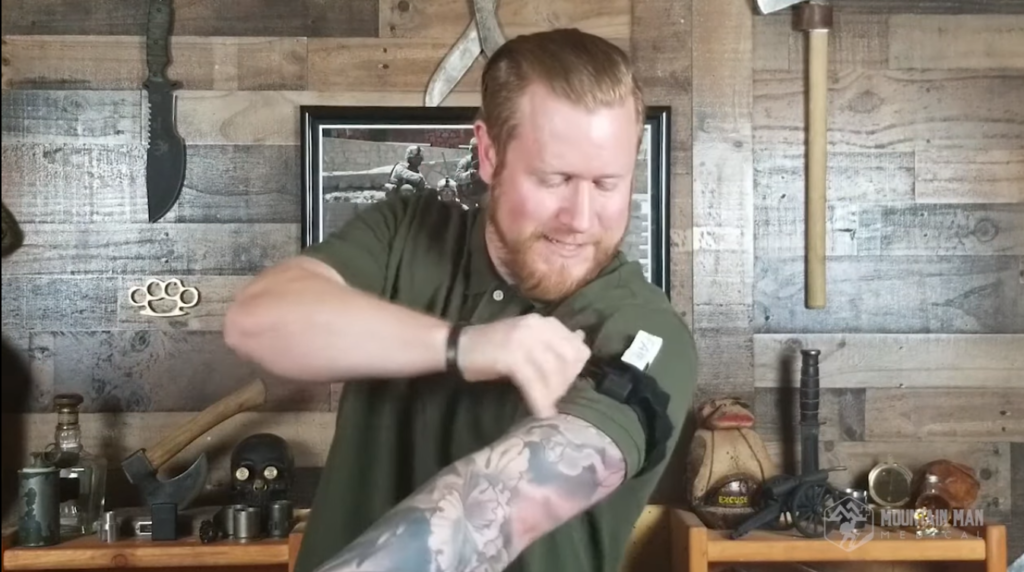What If You Don’t Have a Tourniquet or Trauma Kit? Part 1: Bleeding

It’s impossible to be prepared at all times. We’re likely to be caught off guard and without important gear when an emergency happens. This is why training skills is so important.
Skills are weightless and with us all the time if an edge is honed every now and then. Skills sharpen or dull depending on how often they are used. Gear is great, but you also need to know what to do if you don’t have any, or, you use up everything you have.
This will be a multiple article discussion about what to do in the event you don’t have any gear with you. All you have is your mind, a bad situation, and an injured person in danger.
Severe Bleeding
This is first because blood loss is the injury that will kill your casualty the quickest, but the simplest to prevent. If you’ve been following the Mountain Man Medical YouTube channel or reading any of the articles on this web site, then you already know a tourniquet (TQ) is the first choice for treating life-threatening wounds to arms and legs.
TQs are easy to use and fast to apply with very little training, and are clearly the optimal choice. But what if you don’t have one… or there are more casualties and/or wounds then you have tourniquets for?

Direct Pressure
Your first move should be immediate direct pressure with your hands. No matter where the wound is (except head wounds), placing your hands directly over the bleed and pressing down hard has shown to be greatly effective.
There’s a method to this to be effective, however.
- Attempt to position the casualty in a way that allows you to get your body weight over your locked elbows. This is essential for maintaining pressure for long periods of time. You’re unlikely to be strong enough to hold constant firm pressure, so use every advantage you can.
- Also attempt to position the casualty so the wound is above the level of the victims heart. A recent study shows there may be an advantage to elevating wounds, but don't stress over it. Just do it if you can.
- Use both hands, directly over the bleeding wound
- Use the heel of your hand. This reduces the surface area and increases the amount of pressure to the bleeding artery.
- Don’t let up. Especially not to check if the wound’s still bleeding. Hold pressure until after a commercial TQ has been applied or a medic directs you otherwise.
A Word About Improvised Tourniquets
“Now wait! You forgot all about improvised tourniquets!? You should be trying to make one.”
No, I didn’t forget, direct pressure is still the better choice.
Most people know the rough idea of how a TQ works, and many try to make their own with whatever items they can find. But most fail to understand the method and as a result, improvised tourniquets rarely control bleeding effectively.
Not only that, but while you’re running around, trying to find everything you need to make a TQ, the victim is quickly bleeding to death.
If you have a helper you can trust, instruct them to apply direct pressure over the wound while you find the items you need to make an improvised TQ. Direct pressure must be applied at all times.
If you would like to know more about improvised TQs , including how to make one, watch these videos:
